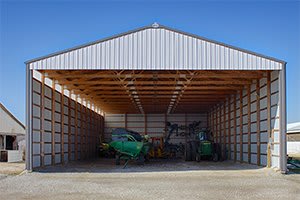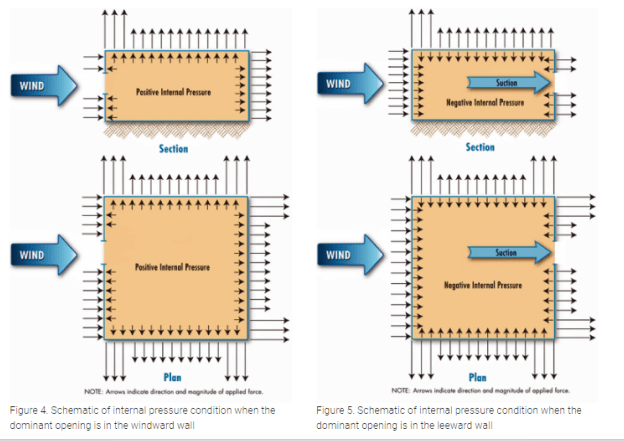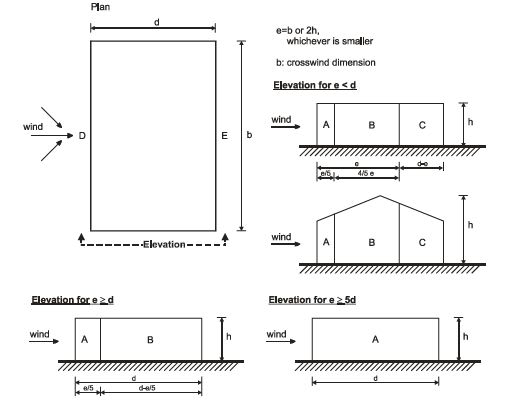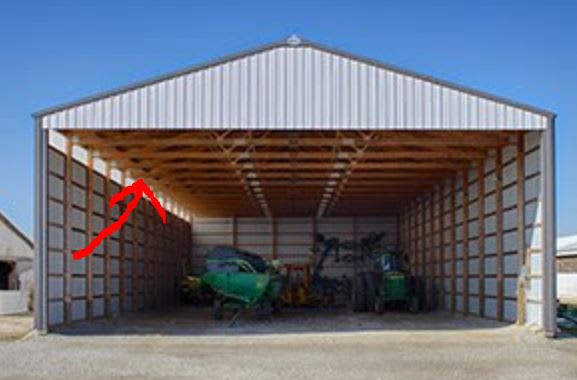R13, people like me don't read or can't read? Or is it an entirely different situation, where we care about nuances and hope that a person can come to this site and leave a better engineer.
First of all let's get a few items corrected for the above posts.
1. r13 (Civil/Environmental)3 Jan 21 23:31
I don't know how you have determined the coefficient is 0.72 at D, but yes, the pressure calculated at the entrance should be applied all around and pointing to the internal surfaces. Now the interesting point is how the wind load is distributed on the external surfaces of the roof and wall E. Is this an air field hangar?
Cpe and Cpi are coefficients in the code we are referring too, as the pressure external and internal are not equal as stated in your post. nothing could be further from the truth, this is due to average along the opening that occurs in a building like we are referring to, as the opening gets large the less the impact of local peaks, if we really want to hit this home we need to talk about frequency, but I don't think air slugs and frequency is required for today. This is why in some wind codes cladding had a pressure double to the main frame. The cladding can be subject to the peak pressure. They will also have modification factors that will vary between internal and external pressures often. If you had a header sheet like this building does the two design pressures will be different.
2. r13 (Civil/Environmental)3 Jan 21 13:02
IMO, if not addressed directly by code, you shall conservatively use Cpe for both internal and external. I don't think internal pressure exist, or effect little, when wind blows in direction normal to the opening (like blow air into the balloon).
Again this has an error or two, the internal pressure can govern in this type of building when blowing from other directions depending on the governing code for live and snow loads, if you code requirements have a combination requirement then it can govern. The header sheet must be designed for these pressures as it will govern the header sheet design.
I am still at sea with this Ballon theory.
3. r13 (Civil/Environmental)3 Jan 21 01:25
Without refer to any code, I think it is an open building, isn't it?
This is wrong, refer above, the building isn't open it is a partially enclosed building in your code asce16.
The only part I agree that is correct is when you copied and pasted tomfh post, that is reasonable.
"Programming today is a race between software engineers striving to build bigger and better idiot-proof programs, and the Universe trying to produce bigger and better idiots. So far, the Universe is winning."






![[2thumbsup] [2thumbsup] [2thumbsup]](/data/assets/smilies/2thumbsup.gif)
